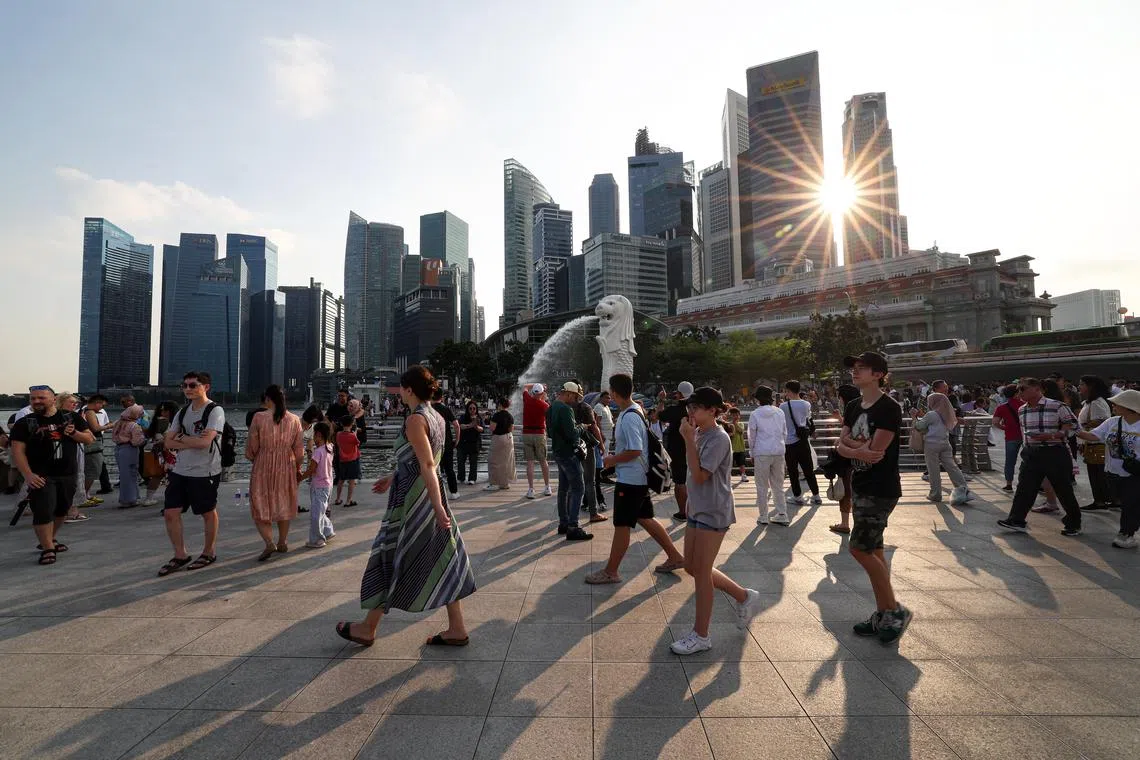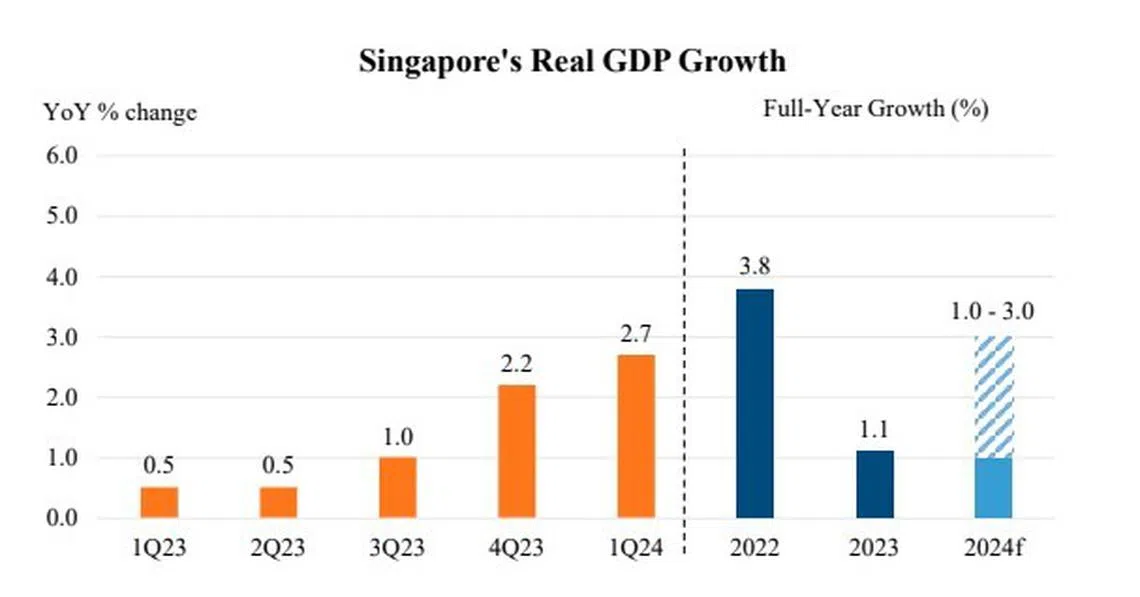Singapore’s economic growth slows quarter on quarter but gradual pickup still likely
Sign up now: Get ST's newsletters delivered to your inbox

The Ministry of Trade and Industry warned that Singapore remains vulnerable to downside risks in the global economy.
PHOTO: ST FILE
Follow topic:
SINGAPORE - The economy grew in the first quarter of 2024 at its weakest pace in a year, dragged by slower expansion of the export-driven manufacturing sector, according to the final estimates released by Singapore’s Ministry of Trade and Industry (MTI) on May 23.
On a quarter-on-quarter seasonally adjusted basis, the economy expanded by 0.1 per cent in the January-March period,
The base effect, when compared with the same period in 2023, helped the economy post year-on-year growth of 2.7 per cent, higher than the 2.2 per cent expansion in the fourth quarter of 2023. However, it still missed a median forecast of 3 per cent by economists in a Bloomberg News poll.
MTI kept its full-year 2024 gross domestic product (GDP) growth forecast of 1 per cent to 3 per cent, saying that Singapore’s manufacturing and trade-related sectors are expected to see a gradual pickup in growth over the course of the year.
“Within the manufacturing sector, the electronics cluster is projected to recover gradually in the coming quarters, supported by demand for semiconductors for end-markets such as smartphones, PCs and AI (artificial intelligence),” MTI said in a statement.
However, the ministry warned that Singapore remains vulnerable to downside risks in the global economy.
“Escalations in geopolitical tensions in the Middle East or the war in Ukraine could disrupt global supply chains and commodity markets,” it said.
Additionally, if inflation remains stubborn in advanced economies, central banks there could further tighten financial conditions and potentially trigger latent vulnerabilities in banking and financial systems.
Beyond these immediate risks, central banks in advanced economies are still expected to cut their benchmark interest rates later in 2024 as inflation eases, which should help support global growth.
“Looking ahead, GDP growth in the major economies is expected to taper gradually in the immediate quarters due to tight financial conditions, before picking up alongside anticipated policy rate cuts later in the year,” Mr Gabriel Lim, MTI’s permanent secretary, said in a virtual media briefing.
Mr Edward Robinson, deputy managing director and chief economist at the Monetary Authority of Singapore (MAS), said at the briefing that MAS’ current policy stance – favouring trade-weighted appreciation of the Singapore dollar against currencies of its trading partners – remains appropriate to keep inflation at bay.
Meanwhile, a strong pickup in services could help mitigate some of the downward pressure from the global economy.
Even as the manufacturing sector contracted
“The stronger-than-anticipated recovery in air travel and tourism
At the same time, the finance and insurance sector will be supported by higher tourist spending, while the projected peaking of global interest rates will support the banking and fund management segments through higher commissions and fees, it added.
While the electronics industry was among the weakest performers in the manufacturing sector, MTI remained hopeful of a potential turnaround.
It said growth in the electronics cluster will in turn have positive spillover effects on the precision engineering cluster, as well as the machinery, equipment and supplies segment of the wholesale trade sector.
The optimism is backed by forecasts by international bodies such as the World Trade Organisation, which expects global merchandise trade to grow by 2.6 per cent in 2024, after 2023’s 1.2 per cent contraction.
Separately on May 23, Enterprise Singapore said the increase in 2024 key exports was likely to come in at the lower end of its 4 per cent to 6 per cent growth forecast due to a disappointing start to the year. Key exports fell 3.4 per cent in the first quarter of 2024, following a 1.4 per cent decline in the previous quarter.
DBS Bank economist Chua Han Teng said Singapore’s economic recovery in 2024 will hinge on the performance of external-oriented services clusters such as wholesale trade and transportation and storage. The clusters, in the first quarter, grew at a faster pace on both an annual and quarterly basis.
Still, the importance of electronics to the Singapore economy’s underlying strength cannot be overstated. The cluster alone accounts for almost half of overall factory output and over 9 per cent of the country’s GDP.
Mr Chua said that while the outlook for manufacturing in general and electronics in particular appears fragile, forward-looking indicators point to a recovery.
The latest business expectations survey
“We expect Singapore’s electronics output to benefit from positive spillovers arising from the ongoing global tech upturn,” said Mr Chua. The increasing use of AI applications is likely to kick-start a replacement cycle for smartphones and PCs, he said.
Ms Selena Ling, chief economist and head of global markets research and strategy at OCBC Bank, pointed to global AI hardware leader Nvidia’s latest quarterly results
She said recent trade data also pointed to a pickup in demand and prices for smartphones, data centre operators and AI developers – for instance, semiconductor shipments for South Korea jumped an annual 45.5 per cent in the first 20 days of May.
Both OCBC and DBS expect Singapore’s 2024 GDP growth to come in at around 2 per cent.

GRAPHIC: MTI


